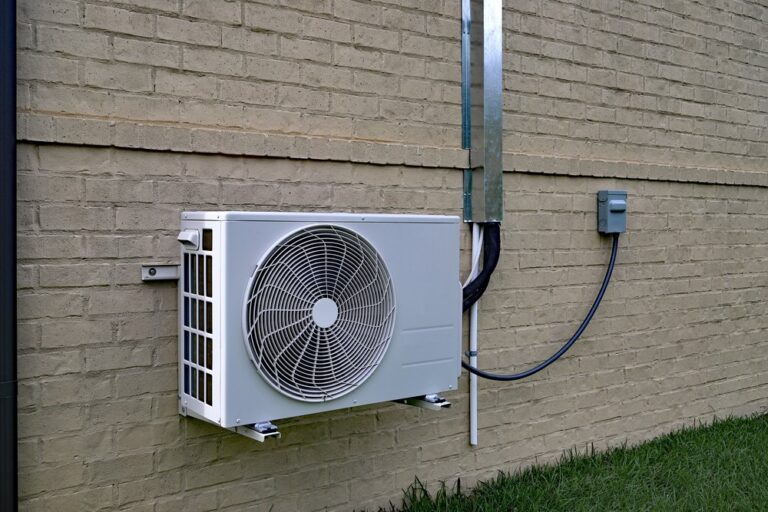Are you looking for an efficient, flexible way to heat and cool your home without the hassle of traditional HVAC ductwork? Mini-split systems might be the solution you’re searching for. These modern, compact systems are gaining popularity for their energy-saving features and ability to provide targeted comfort in specific home areas.
But is a mini-split system the right fit for your home? Below, we break down the pros, cons, and key points before deciding.
If you need expert mini split services in Springdale, AR, be sure to work with trusted professionals to ensure proper installation and optimal system performance.
What is a mini-split system?
A mini-split, or ductless HVAC system, efficiently controls the temperature in specific zones within your home. Mini-splits operate without requiring ductwork, setting them apart from traditional HVAC units. Instead, they consist of an indoor air-handling unit and an outdoor compressor, connected by a small conduit.
Mini-splits are commonly used to regulate the temperature in individual rooms or areas, making them an excellent option for homes with unique layouts or spaces that are difficult or costly to heat and cool with a traditional system.
The pros of mini-split systems
1. Energy efficiency
One of the greatest advantages of a mini-split system is its energy efficiency. Mini-split systems avoid the energy losses common in traditional HVAC setups by sending heated or cooled air straight into the room, without relying on ductwork. By focusing energy only where needed, you can reduce overall consumption and lower your utility costs.
2. Zoned comfort
Do you have rooms in your home that are always too warm or cold? Mini-splits offer zoned temperature control, allowing you to heat or cool only the spaces you’re using. This feature not only enhances comfort but also further reduces energy waste.
3. Flexible installation
Because they don’t require ductwork, mini-splits are highly adaptable to various spaces, including older homes, room additions, garages, or sunrooms. The indoor air-handling units are available in different styles, such as wall-mounted, floor-mounted, and ceiling-recessed, providing plenty of options to suit your décor and layout.
4. Improved air quality
Traditional HVAC systems can collect dust, pollen, and allergens in their ductwork, which are then redistributed throughout your home. On the other hand, mini-splits come equipped with multiple filtration stages to clean and purify the air, helping improve indoor air quality.
5. Dual heating and cooling capabilities
Many mini-splits double as heating and cooling systems, making them a versatile year-round option. This can eliminate the need for separate heating systems, saving space and money.
The cons of mini-split systems
1. Higher upfront costs
While mini-split systems can save you money on energy bills over time, the initial installation cost tends to be higher than that of some traditional HVAC systems. However, this higher investment is often offset by long-term savings in energy efficiency.
2. Maintenance requirements
Mini-splits require regular maintenance to ensure they run efficiently. This includes cleaning or replacing filters, inspecting the indoor and outdoor units, and occasionally checking the refrigerant levels. While maintenance isn’t overly complicated, neglecting it can reduce performance.
3. Aesthetics
Some homeowners may find that the indoor air-handling units of a mini-split system don’t blend seamlessly with their interior décor. Although advancements in design offer sleeker options, they are still more visible than hidden duct systems.
4. Proper sizing is critical
For a mini-split system to perform optimally, it needs to be sized correctly for your space. An undersized unit will have a hard time keeping the space at a comfortable temperature. At the same time, one that’s oversized can cycle on and off too often, leading to energy waste and added strain on the system. Professional installation is key to avoiding these issues.
Key considerations before installing a mini-split system
1. Your home’s layout and needs
A mini-split system is ideal if you want to regulate temperatures in specific zones or areas. If your home already has a functional duct system and you’re looking to replace an HVAC unit, upgrading to an energy-efficient central air system might make more sense.
2. Budget
While mini-splits have a higher upfront cost, they offer savings over time due to reduced energy consumption. Be sure to evaluate your budget and long-term financial goals before deciding.
3. Professional installation
Proper installation is crucial for a mini-split system to work efficiently. From the correct placement of the indoor and outdoor units to checking refrigerant levels, professional expertise ensures your system operates at its full potential.
4. Aesthetics and placement
If the appearance of the air-handling units is a concern, consider options like recessed ceiling units or floor-mounted units, which can blend more subtly into your space.
5. Longevity
When appropriately maintained, mini-split systems can last up to 20 years. Regular upkeep, including cleaning filters and scheduling seasonal professional maintenance, will help extend its lifespan.
Is a mini-split system right for you?
Mini-split systems are excellent for homeowners looking for efficient, versatile, and customizable heating and cooling solutions. If you’re ready to experience the benefits of high-performance climate control or have specific areas in your home that could benefit from independent temperature regulation, a mini-split system may be the perfect fit.
Be sure to consult with HVAC professionals specializing in mini-split installations to ensure the system is tailored to your home’s needs and installed flawlessly.
Conclusion
A dependable heating and cooling system is at the heart of every functional home. Its energy efficiency, zoned comfort, and flexible installation features make it a compelling option for many homeowners. However, weighing the initial cost, maintenance requirements, and aesthetics against your specific needs is essential.
Contact trusted technicians today to bring energy-efficient comfort to your home.

